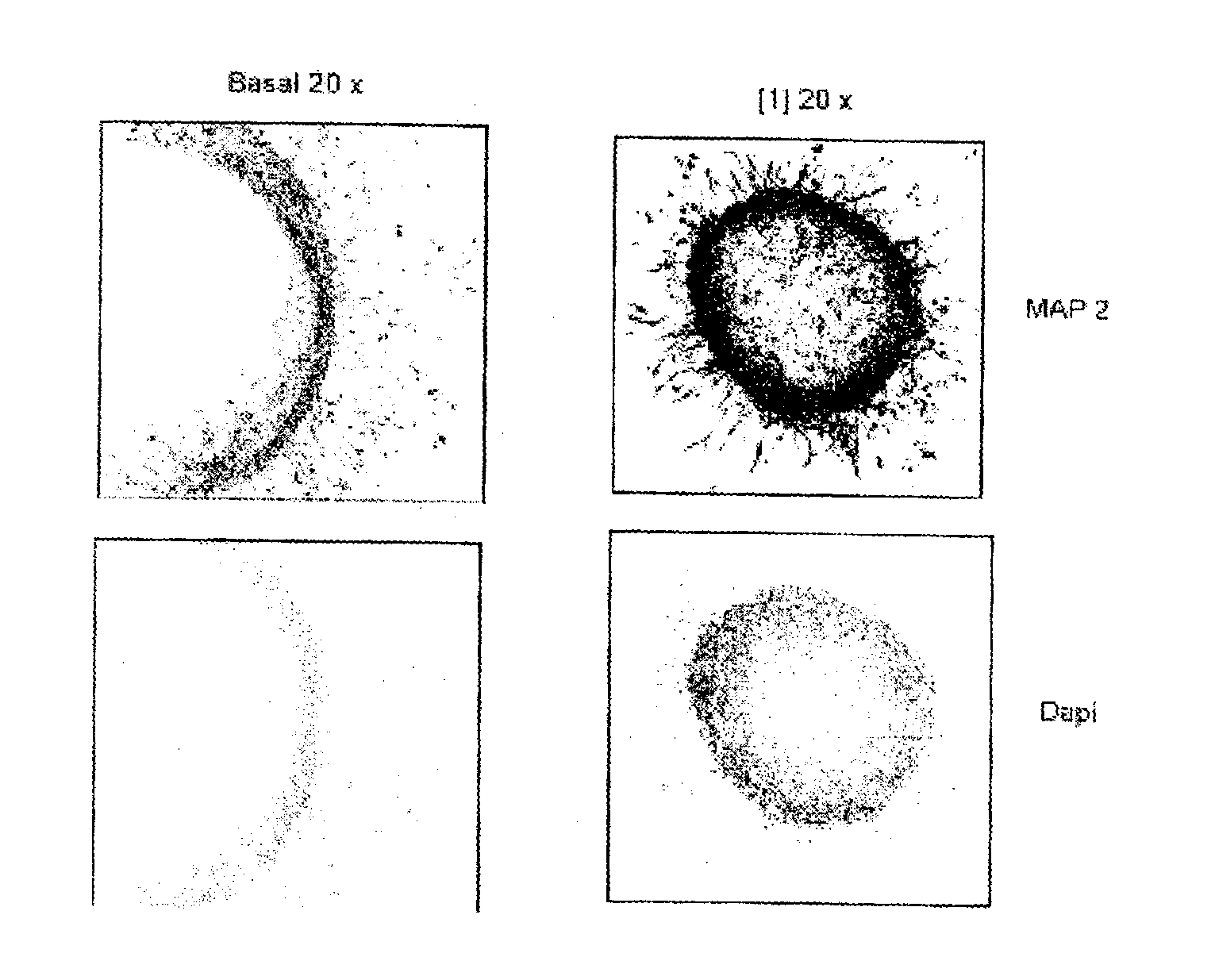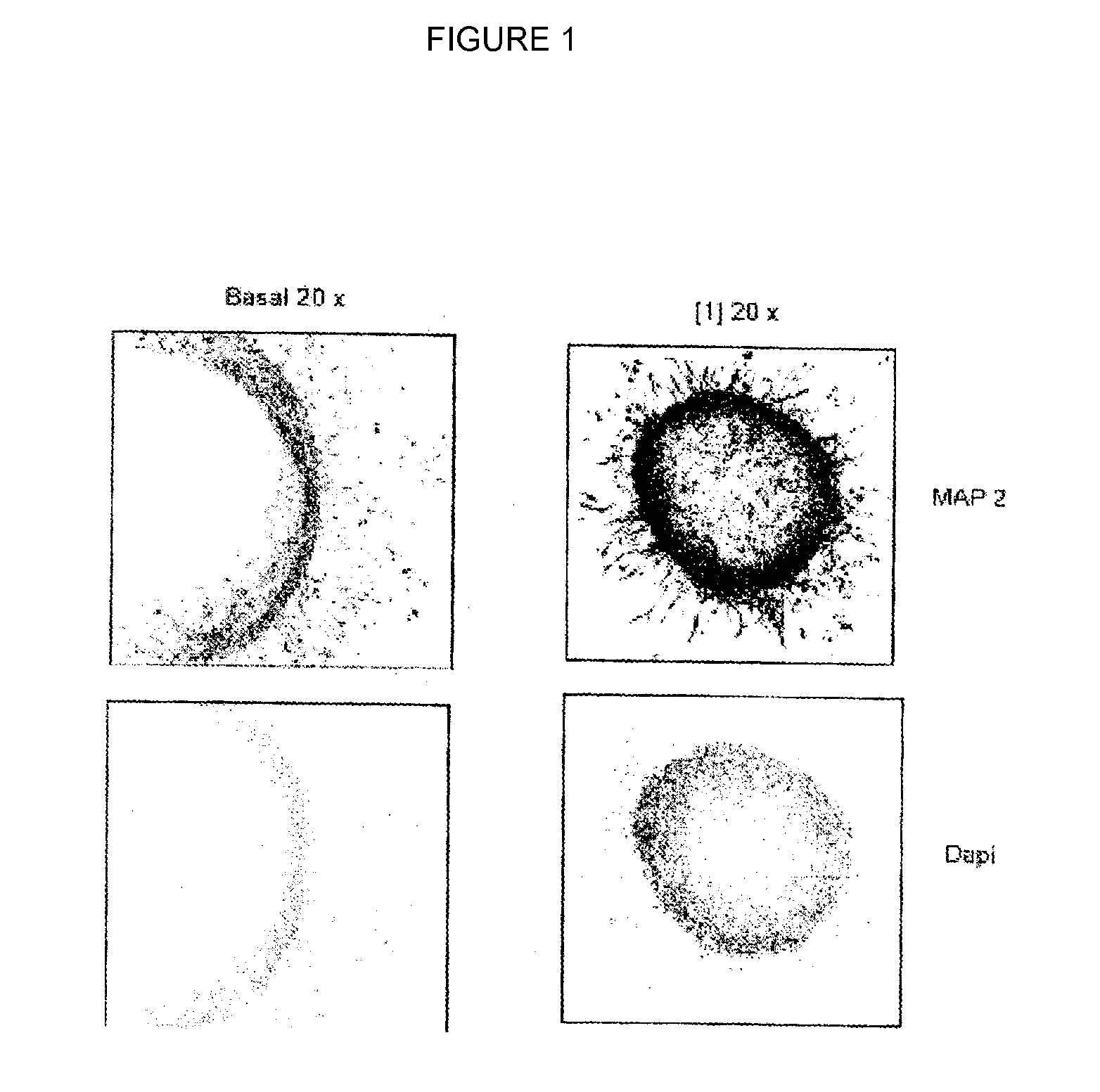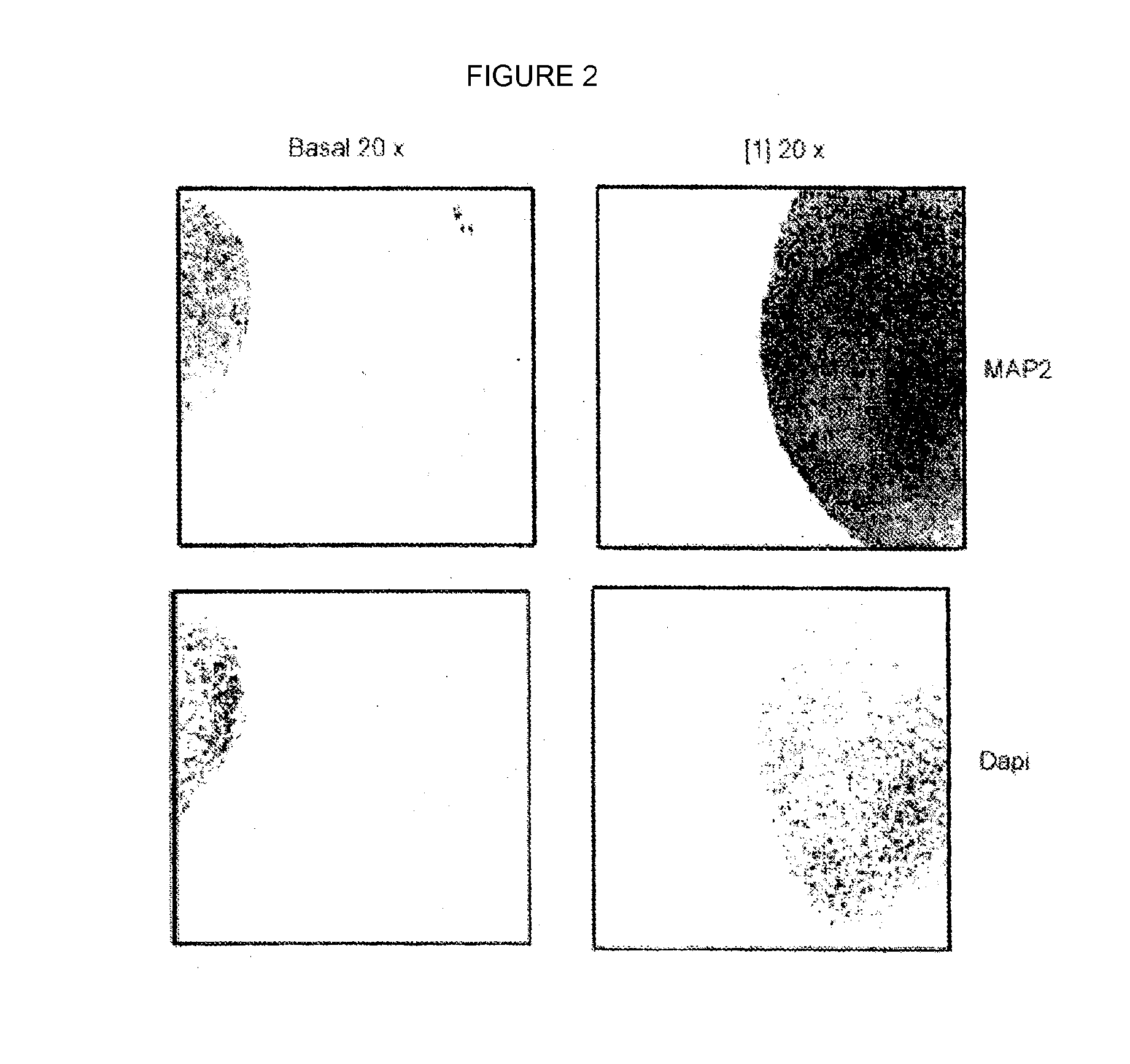Use Of Heterocyclic Compounds As Neurogenic Agents
a heterocyclic compound and neurogenic agent technology, applied in the field of heterocyclic compounds, can solve the problems of loss of regulation and cell function, system limited capacity to produce new neurons, and prone to external aggression and different diseases
- Summary
- Abstract
- Description
- Claims
- Application Information
AI Technical Summary
Benefits of technology
Problems solved by technology
Method used
Image
Examples
example 1
[0102]The aforementioned test was carried out using as formula (I) compound the compound 2,4-dibenzyl-[1,2,4]thiadiazolidine-3,5-dione[1].
[0103]The results obtained show that said compound [1] induces astrocyte (FIG. 1) and neuron (FIG. 2) differentiation of cells present in isolated neurospheres of 2-day-old neonatal rats. In said figures “basal” refers to neurospheres grown in the absence of the compound (I); “x” indicates the number of magnifications; “DAPI” refers to fluorescent staining by 4′,6-diamidino-2-phenylindole (DAPI).
example 2
[0104]The test was carried out using as formula (I) compound the compound 4-benzyl-2-naphthalene-1-yl-[1,2,4]thiadiazolidine-3,5-dione[2].
[0105]The results obtained show that said compound [2] induces astrocyte (see FIG. 3) and neuron (see FIG. 4) differentiation of cells present in isolated neurospheres of 2-day-old neonatal rats. In said figures “basal” refers to neurospheres grown in the absence of the compound of formula (I); “x” indicates the number of magnifications; GFAP refers to viewing by GFAP (glial fibrillary acidic protein) staining; “Nestin” refers to staining by nestin, which is present in immature neural cells; MAP-2 refers to viewing by fluorescent staining by MAP-2 (microtubule-associated protein 2); “Mixture” refers to staining by both nestin and GFAP in the case of FIG. 3, and by nestin and MAP-2 in the case of FIG. 4.
[0106]The figures also show a migration of the differentiated cells: in FIG. 3, the upper row of photographs has been taken magnifying cells in the...
example 3
[0108]The test was carried out using as formula (I) compound the compound 2-Benzhydryl-4-benzyl-[1,2,4]thiadiazolidine-3,5-dione [3].
[0109]The results obtained show that said compound [3] induces astrocyte (FIG. 5) and neuronal (FIG. 6) differentiation of cells present in isolated neurospheres of 2-day-old neonatal rats. In said figures “basal” refers to neurospheres grown in the absence of the compound (I); “x” indicates the number of magnifications; GFAP in FIG. 5 refers to viewing by GFAP (glial fibrillary acidic protein) staining; MAP-2 in FIG. 6 refers to viewing by fluorescent staining by MAP-2 (microtubule-associated protein 2).
PUM
| Property | Measurement | Unit |
|---|---|---|
| structure | aaaaa | aaaaa |
| area | aaaaa | aaaaa |
| energy | aaaaa | aaaaa |
Abstract
Description
Claims
Application Information
 Login to View More
Login to View More - R&D
- Intellectual Property
- Life Sciences
- Materials
- Tech Scout
- Unparalleled Data Quality
- Higher Quality Content
- 60% Fewer Hallucinations
Browse by: Latest US Patents, China's latest patents, Technical Efficacy Thesaurus, Application Domain, Technology Topic, Popular Technical Reports.
© 2025 PatSnap. All rights reserved.Legal|Privacy policy|Modern Slavery Act Transparency Statement|Sitemap|About US| Contact US: help@patsnap.com



